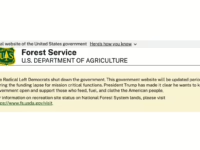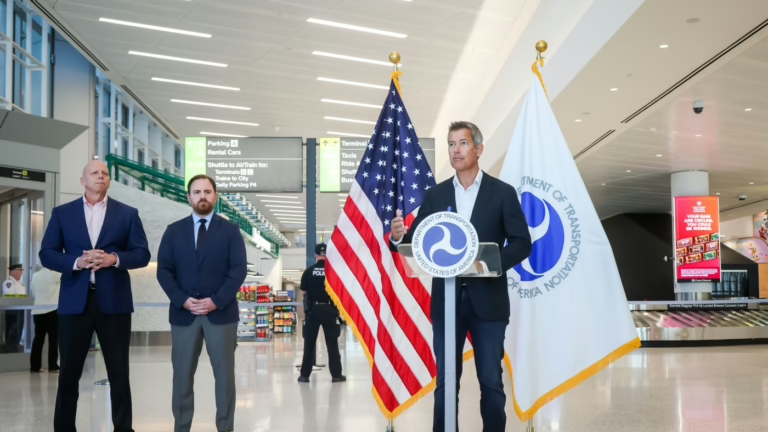Transportation Secretary Sean Duffy addresses the media at Newark Liberty International Airport in New Jersey on Monday.
Michael Nagle/Bloomberg via Getty Images
Across the United States, travelers are beginning to experience the ripple effects of the ongoing government shutdown, as shortages in air traffic control personnel are causing widespread flight disruptions.
On Monday evening, the Federal Aviation Administration (FAA) reported that staffing deficits affected a dozen of its facilities nationwide.
At Newark Liberty International Airport in New Jersey, Transportation Secretary Sean Duffy held a press briefing, attributing the surge in flight delays to a “minor increase in sick leave” among air traffic controllers.
Duffy highlighted the anxiety among controllers about working without pay during the shutdown, noting that some are contemplating alternative income sources, such as calling in sick to drive for ride-share services. He cautioned that flight interruptions might intensify if the shutdown persists.
“Should we detect any safety concerns in the control towers that compromise controllers’ ability to manage airspace effectively, we will reduce flight throughput, leading to more delays or cancellations,” Duffy explained. “Safety in the skies is our top priority.”
The FAA confirmed in a statement to NPR that it implements traffic slowdowns at certain airports to maintain safe operations amid staffing shortages. Travelers are encouraged to consult the FAA’s website for up-to-date information on flight statuses at airports nationwide.
The political stalemate responsible for the shutdown, which began on October 1, stems from partisan disputes primarily over healthcare subsidy funding, with lawmakers from both parties exchanging blame for the resulting travel chaos.
During the previous government shutdown from December 2018 to January 2019, air traffic controllers played a pivotal role in ending the impasse. At that time, a slight uptick in sick leave at two control centers caused significant disruptions at major East Coast airports, increasing pressure on the Trump administration to negotiate a funding agreement with Congress.
Persistent staffing shortages among controllers-due to slow hiring processes, lengthy training, and high attrition rates-have continued to challenge the aviation system. Monday’s events underscore how even a small rise in sick calls can severely impact air travel.
Airports Experiencing Delays
The FAA identified delays affecting airspace over cities including Phoenix, Denver, Chicago, Indianapolis, and Washington, D.C. Both Newark and Denver airports experienced ground delays linked to staffing shortages, with average delays of 53 minutes and 39 minutes respectively, and some flights delayed by nearly two hours.
Hollywood Burbank Airport near Los Angeles faced the most severe disruptions, with average ground delays reaching two and a half hours. Notably, the airport operated without any air traffic controllers for over five hours on Monday, according to California Governor Gavin Newsom.
Governor Newsom publicly criticized the shutdown’s impact, tweeting, “Burbank Airport had ZERO air traffic controllers from 4:15 p.m. to 10 p.m. today because of YOUR government shutdown.”
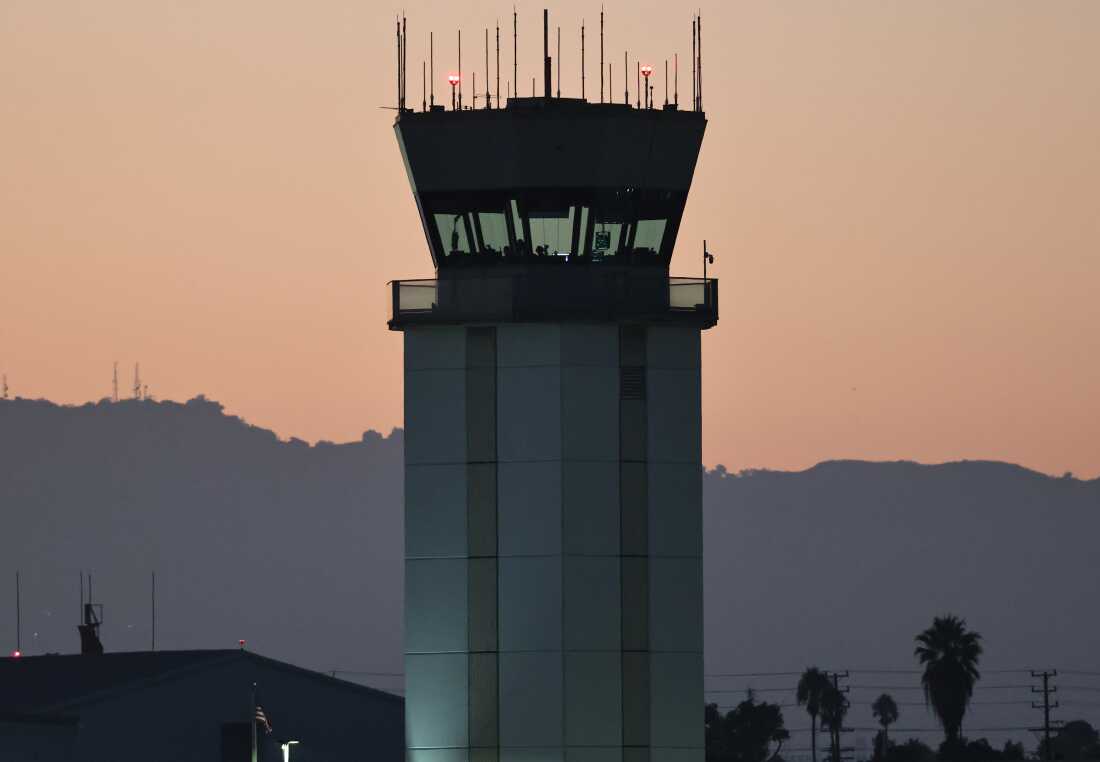
The air traffic control tower at Hollywood Burbank Airport was unmanned for a five-hour stretch on Monday.
Mario Tama/Getty Images
During this period, Southern California TRACON managed air traffic remotely from San Diego. Burbank Airport has not responded to NPR’s request for comment but tweeted Monday night that operations continued and advised passengers to check with their airlines for updates.
Voices from Air Traffic Controllers
At the Newark press event, Nick Daniels, president of the National Air Traffic Controllers Association (NATCA), avoided political commentary and urged an end to the shutdown.
“Ending this shutdown is critical so that the FAA and dedicated aviation safety professionals can focus fully on their essential duties without distraction,” Daniels stated.
NATCA, representing over 20,000 controllers, noted that many members already work long hours-up to 10 hours daily, six days a week-and the shutdown has compounded their challenges by furloughing support staff and halting assistance programs.
The union’s website cautions members that engaging in any job action could lead to federal service termination, emphasizing that such conduct is illegal and damages NATCA’s reputation.
In a statement to NPR, NATCA confirmed that nearly 11,000 fully certified controllers remain active, and a small number calling in sick daily is typical. However, Monday’s disruptions highlight the vulnerability of the national air traffic system and the pressing need to expedite recruitment and training.
Since the start of the second Trump administration, Secretary Duffy has advocated for modernizing the nation’s air traffic control infrastructure-some of which still relies on outdated technology like floppy disks and Windows 95-and has prioritized accelerating hiring efforts.
Duffy acknowledged that the shutdown hampers these initiatives, both immediately and in the long term.
“This shutdown significantly impedes our progress in addressing controller shortages,” he said. “It’s placing additional strain on a system we’re striving to stabilize.”
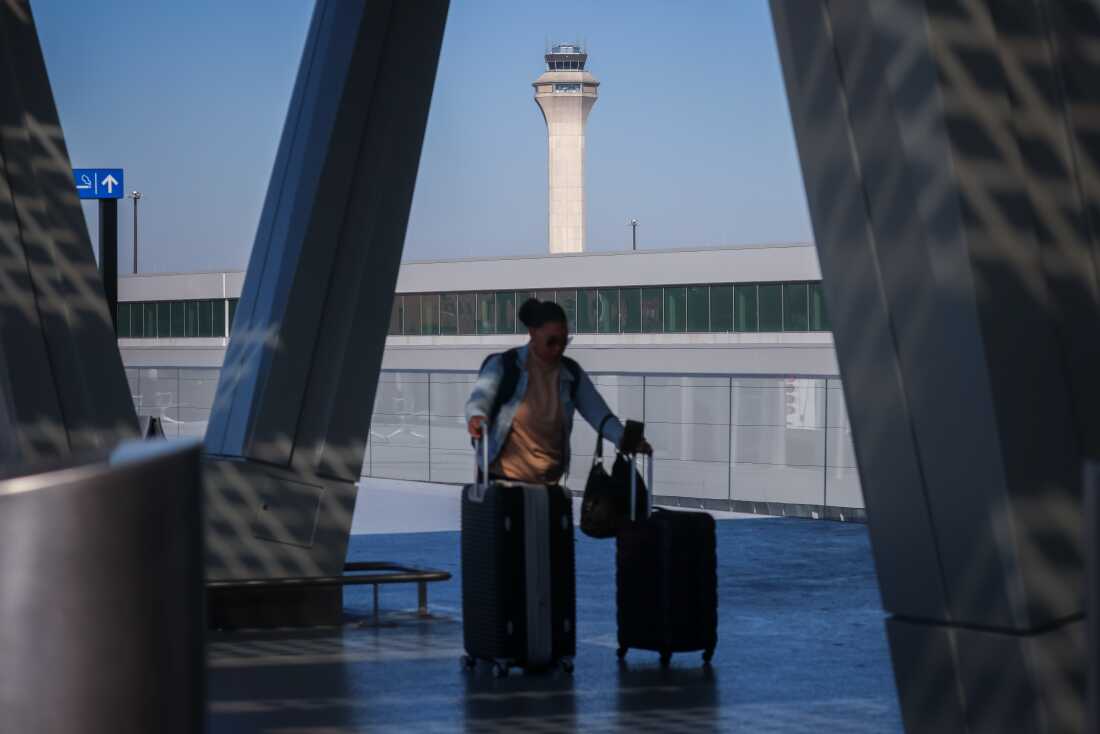
FAA air traffic control tower at Newark Liberty International Airport, where staffing shortages caused flight delays on Monday.
Michael Nagle/Bloomberg via Getty Images
Additional Impacts on Air Travel
The shutdown threatens to severely affect rural airports as well. Secretary Duffy warned that the Essential Air Service (EAS) program, which subsidizes commercial flights to approximately 170 rural communities, could exhaust its funding as early as Sunday.
“Every state will feel the impact if subsidies to airlines servicing these communities are halted,” Duffy said, highlighting Alaska as particularly vulnerable.
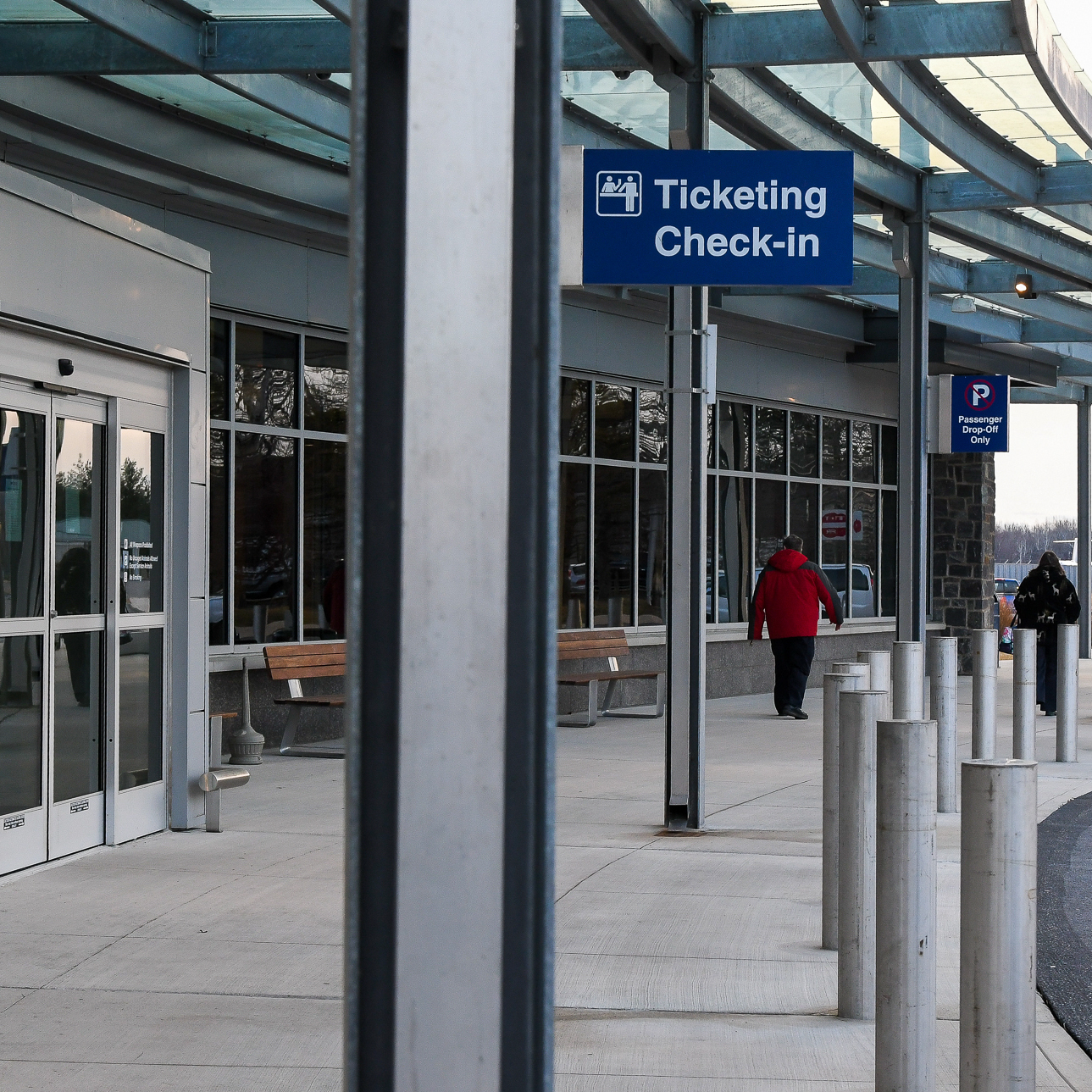
Earlier this year, the White House proposed cutting EAS funding by over half, despite the program’s strong bipartisan support in Congress, a fact Duffy acknowledged during Monday’s briefing.
Natasha Marquez, spokesperson for the Regional Airline Association, told NPR that before the COVID-19 pandemic, the EAS supported more than 17,000 jobs and facilitated hundreds of daily flights from airports located roughly 200 miles from the nearest major hub, meaning many travelers could soon face reduced service.
It remains uncertain when passengers will notice these changes, as airlines typically request government reimbursements at the beginning of each month for the previous month’s flights, according to the Department of Transportation.











